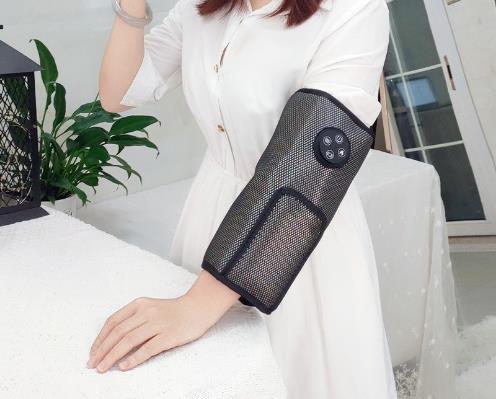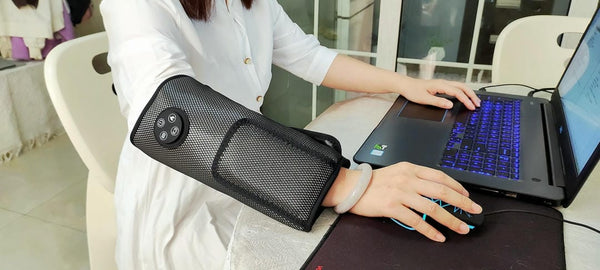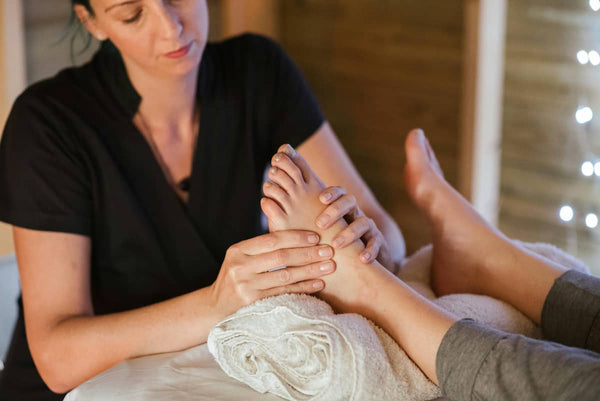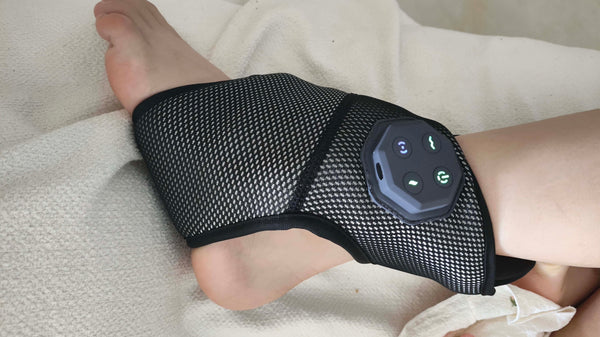 The daily commute. Whether you’re in it for the long haul on the motorway or sitting on a train, those hours add up. For many Aussies, the result is a familiar, unwelcome companion: a deep, nagging ache in the lower back. Sound familiar? You get home feeling stiff and sore, and the search for relief begins. This leads to a flood of questions: Do I need a better chair? Should I buy a lower back massage machine? Or is there a more natural way?
The daily commute. Whether you’re in it for the long haul on the motorway or sitting on a train, those hours add up. For many Aussies, the result is a familiar, unwelcome companion: a deep, nagging ache in the lower back. Sound familiar? You get home feeling stiff and sore, and the search for relief begins. This leads to a flood of questions: Do I need a better chair? Should I buy a lower back massage machine? Or is there a more natural way?
Let's be honest, the market is full of products promising a quick fix. From ergonomic furniture to high-tech gadgets and exercise programs, it's tough to know what's a genuine solution and what's just hype. This guide will break down the three main approaches to tackling lower back pain, helping you build a fair dinkum strategy that actually works for your lifestyle.
The Foundation: Preventing Pain with Ergonomics
The most effective long-term strategy always starts with prevention. You can stretch all day and use the best massager on the market, but if you spend eight hours in a bad chair, you’re constantly fighting an uphill battle. This is where ergonomics—the science of designing your environment to fit you—comes in. It’s all about reducing the strain on your body in the first place.
For office workers and commuters, this means focusing on your seated posture. An ergonomic chair with proper lumbar support can make a world of difference by maintaining the natural curve of your spine. Likewise, a standing desk allows you to change positions throughout the day, preventing the muscle fatigue that comes from static sitting. These aren't just fancy office perks; they are fundamental tools for preventing chronic back pain.
Think of this as the foundation of your house. Without a solid ergonomic setup, any other pain relief measure you add is just a temporary patch. Investing in a supportive chair for your car or office isn't just about comfort; it's about proactively stopping the pain before it even starts.
The Relief: Managing Pain with a Massage Machine
Even with the best posture, the strain of a long day can still lead to muscle tension and soreness. This is where a targeted device can be a lifesaver. A good lower back pain machine is designed to provide on-demand relief, helping to soothe tired muscles and ease stiffness. This is the "management" part of your strategy.
Modern devices offer much more than simple vibration. A multi-functional lumbar massage machine, like those from KLCOSY, often receives praise for its ability to provide temporary but significant relief. These units combine technologies like Advanced Heat Therapy to warm and relax muscles, with Dynamic Air Compression or Targeted Vibration to perform a deep massage for lower back pain. This combination is excellent for tackling the widespread muscle fatigue you feel after a commute.
While some reviews note that the benefits are temporary, that’s precisely their role. A lower back massager is a tool for managing symptoms as they arise. It won't cure the root cause, but it's an incredibly effective way to reduce pain and discomfort, helping you unwind and recover at the end of the day. A quality lower back therapy machine is an essential part of a comprehensive pain relief toolkit.
The Strength: Building Resilience with Exercise
The third and equally crucial piece of the puzzle is building a stronger, more resilient body. While ergonomics prevent strain and massagers relieve symptoms, exercises like yoga and targeted stretching address the issue from the inside out. This is the natural alternative that creates long-term change.
Lower back pain is often linked to weak core muscles and tight hamstrings or hip flexors. A regular yoga or stretching routine helps to correct these imbalances. Poses like Cat-Cow improve spinal flexibility, while a simple hamstring stretch can relieve the downward pull on your pelvis that contributes to lower back strain. This isn't about becoming a pretzel; it's about gentle, consistent movement.
This approach builds strength and flexibility, making your body less susceptible to the strains of daily life. It’s the active, strengthening component that supports your ergonomic adjustments and reduces your need to rely on pain management tools over time. It makes your body better equipped to handle the demands of your commute.
The Best Approach: A Three-Legged Stool
 So, which method is best? The answer is that you need all three. Think of it as a three-legged stool: if one leg is missing, the whole thing is unstable. A truly effective strategy for combating lower back pain from commuting combines prevention, management, and strengthening.
So, which method is best? The answer is that you need all three. Think of it as a three-legged stool: if one leg is missing, the whole thing is unstable. A truly effective strategy for combating lower back pain from commuting combines prevention, management, and strengthening.
- Prevent with good ergonomics (supportive chair, proper posture).
- Manage symptoms with a quality lower back massage machine when pain flares up.
- Strengthen your body with regular stretching and exercise to build long-term resilience.
By adopting this holistic view, you move away from searching for a single magic bullet and toward building a sustainable system that keeps you pain-free. It empowers you to take control from all angles, ensuring your back is sorted for the long haul.
Frequently Asked Questions
How do I find a massager with features for my specific back pain?
First, identify your pain type. If it's general stiffness and muscle fatigue, look for a lower back massager with features like heat therapy and air compression for broad, soothing relief. If you have specific, deep knots, a device with a strong, targeted vibration function might be better. Premium models often combine these features, and the price usually reflects this versatility. For example, heat and vibration are a fantastic combo for warming up and then working out muscle tension.
Is investing in a premium lower back machine worth it for durability and results?
Generally, yes. While the initial cost is higher, a premium lower back pain machine often uses higher-quality motors, more durable materials, and comes with a better warranty. Consumer-reported results frequently show that these devices provide more consistent performance over time. A cheaper model might save you money upfront, but if it breaks down or the motor weakens after a few months, it's not good value. Investing in a well-reviewed, durable machine is often more cost-effective in the long run.
What durability issues should I check in top-rated back massagers?
When reading reviews for any lower back therapy machine, look for comments on a few key areas. Check for mentions of the motor becoming noisy or weaker over time, as this indicates lower quality. Pay attention to the durability of the fabric cover—does it fray or tear easily? Finally, inspect the power cord and its connection to the device, as this is a common point of failure. A solid warranty is often the best indicator that the manufacturer is confident in their product's durability.
This reply is generated based on currently verifiable public information. It is recommended to cross-check key content with authoritative sources.




0 comments